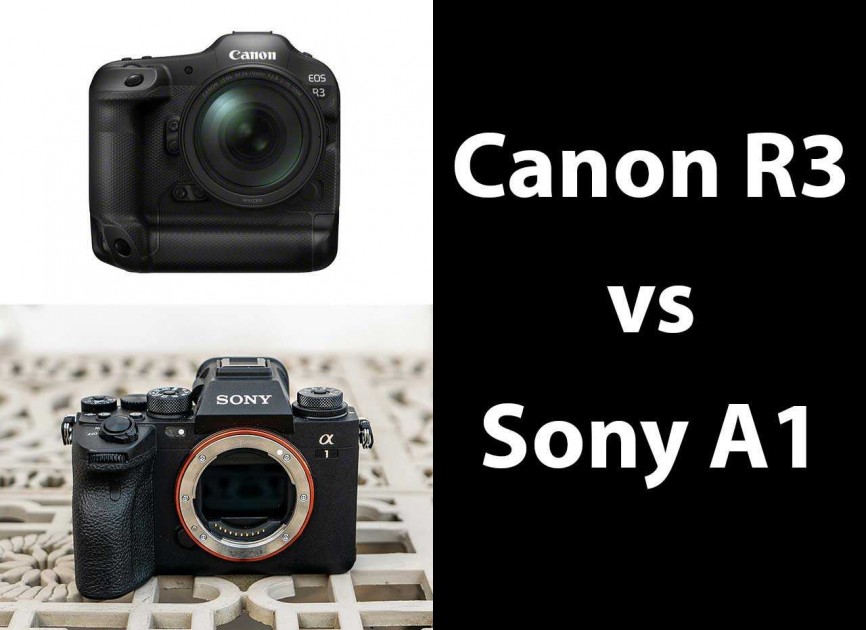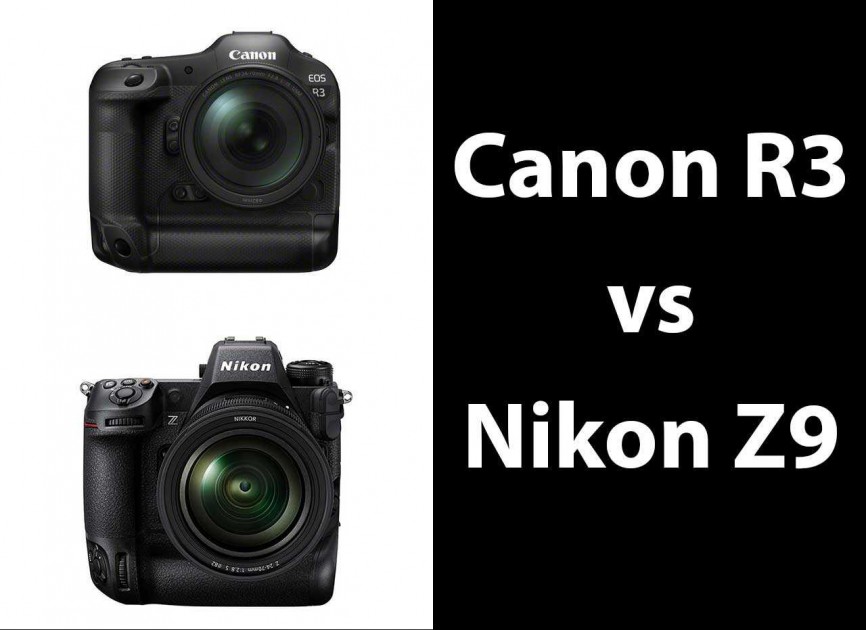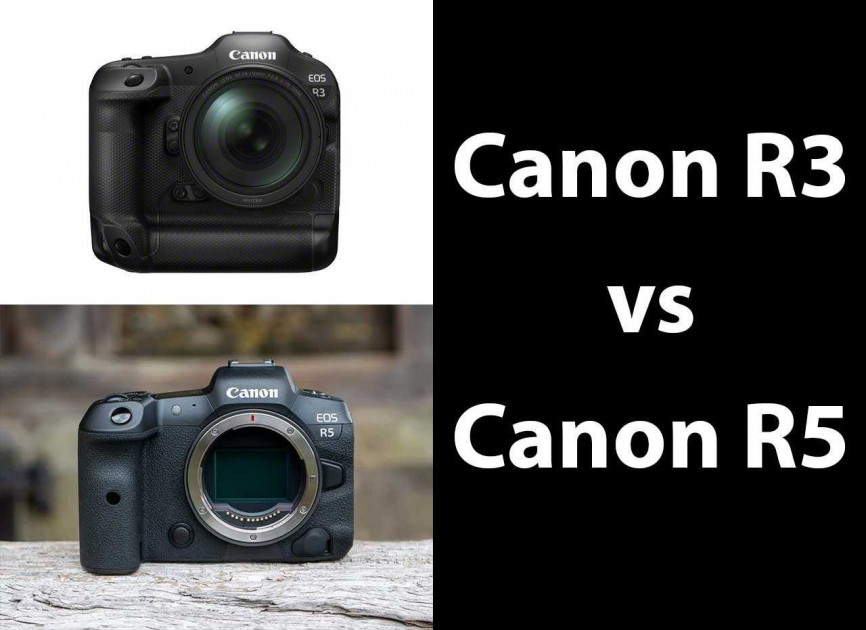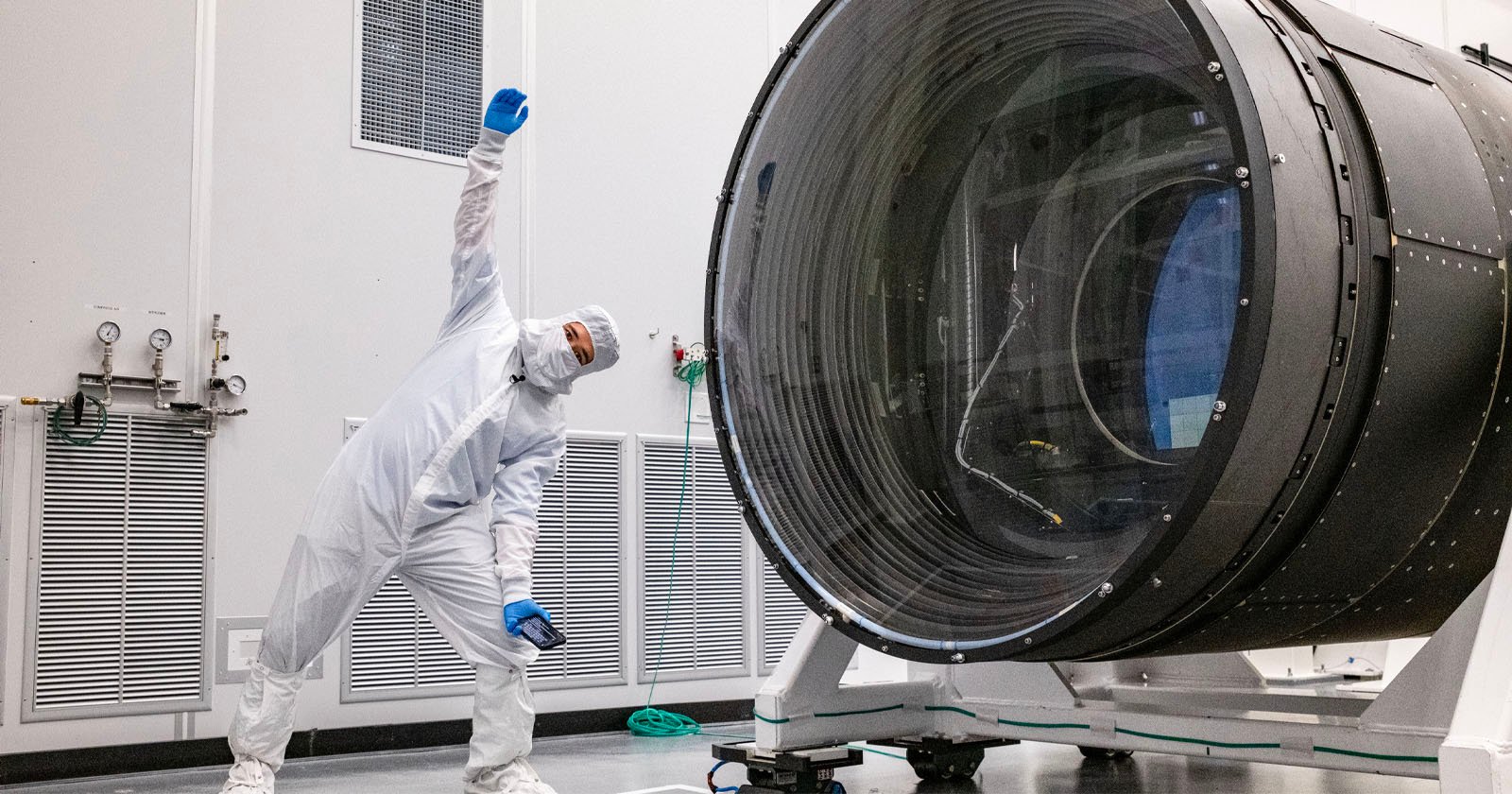

Sony has enjoyed a lot of success recently with the Alpha 1 camera, which despite its £$6500 price-tag has generated a lot of interest amongst professional users and serious enthusiasts alike.
Now Canon have struck back with the announcement of the EOS R3, on paper their most impressive camera to date, and which is clearly a direct challenger to the Sony A1.
Canon haven’t revealed everything about the new R3 just yet, but the Sony A1 and the Canon R3 already share quite a lot of similarities when it comes to their core specifications and features, so which one should you pick?
We’re bringing you this in-depth Canon R3 vs Sony A1 head-to-head comparison to help you choose between these two flagship full-frame mirrorless cameras.
Sensor
The Sony A1 has a 50 megapixel Stacked, Back-Side Illuminated (BSI) CMOS sensor.
We don’t know the megapixel count of the EOS R3 just yet, but we do know that it also uses a stacked BSI sensor, just like the one on the Sony A1.
It won’t be exactly the same, however, as Canon have been very quick to point out that the new sensor in the R3 has been developed solely by Canon, and not by Sony.
This type of sensor potentially translates into better low-light image quality at like-for-like ISO speeds and faster all-round performance.
ISO Speed
The native sensitivity range of the Sony A1 is ISO 100 to ISO 32,000, which can be expanded to ISO 50 to ISO 102,400.
The ISO range of the Canon R3 has not yet been disclosed.
Video
The Sony Alpha 1 offer a headline-grabbing 8K video mode, making it one of only two digital interchangeable lens cameras to offer this feature at present, the other being the Canon EOS R5.
The Sony A1 offers 8K/30p 10-bit 4:2:0 XAVC HS video recording with 8.6K oversampling, in addition to 4K 120p 10-bit 4:2:2 and FullHD at 240fps movie shooting capabilities, and can output 16-bit Raw video over HDMI.
The Canon EOS R3 will almost certainly at least match the cheaper R5 by offering 8K internal video recording up to 30p (non-cropped) in 4:2:2 10-bit Canon Log (H.265) or 4:2:2 10-bit HDR PQ (H.265), in addition to 4K video at up to 120p.
We also hope that the larger body and the negative feedback that Canon have received about the R5 would mean that the new R3 doesn’t suffer from over-heating in the same way that the R5 did, so it would be more likely to match the excellent performance of the Sony A1.
Autofocus
The Sony A1 has avery advanced AF system with 759 phase detection points that cover approximately 92% of the image area. It offers improved Real-time Eye AF for humans and animals, and new Real-time Eye AF for birds, as well as Real-time Tracking that automatically maintains accurate focus.
The new Canon R3 will apparently have the most advanced version of Dual Pixel CMOS AF that the company has ever produced, along with a brand new, as yet undisclosed AF tracking mode which we bet will be Bird-eye AF, hopefully matching the Sony A1’s frankly amazing Bird-eye AF mode.
In an attempt to get one up on Sony, the Canon R3 will also allow you to select and move the AF point just with the look of your eye using the electronic viewfinder, something that even the mighty Alpha 1 can’t do.
It remains to be seen just how effective this intriguing new mode will be in real life, but it could give the R3 a real edge over the A1 when it comes to quickly being able to focus, without even having to touch the camera controls.
Burst Shooting
The Sony A1 offers a class-leading 30fps burst shooting mode with its electronic shutter for 165 JPEG frames or 155 compressed RAW images.
That is, class-leading until now, as the Canon R3 ups the ante from the EOS R5’s 20fps mode to also provide 30fps shooting with the electronic shutter with full AF/AE tracking and minimal image distortion.
Body and Design
The Sony A1 largely follows the tried and tested design of seemingly almost every previous Sony Alpha camera – if it ain’t broke, don’t fix it seems to be the mantra for the newest Alpha camera – with the A1 rather like a more polished cross between the A9 and A7S series bodies.
The Canon R3 is taking a markedly different approach, featuring a similar integrated grip with duplicated vertical controls that EOS-1D series cameras have always offered.
This means that the R3 will be much bigger and heavier than the A1 out of the box, although fitting a battery grip to the flagship Sony camera may substantially narrow the size and weight differences between them.
Both cameras are fully weather-sealed, as you’d expect from professional level models.
IBIS
The new Sony A1 has a 5-axis optical in-body image stabilization system, but it only provides up to 5.5-stops of compensation – good, but not class-leading.
That accolade goes to the Canon R5 which has a pretty incredible stabilisation system. It features a 5-axis in-body image stabilisation (IBIS) that provides up to 8-stops of IS when using the camera with certain compatible RF-mount lenses.
We’d expect the new R3 to offer the same IBIS system as the R5, once again giving Canon an advantage over the Alpha 1.
Viewfinder
The Sony A1 has a frankly amazing 9.44M-dot OLED Quad-XGA electronic viewfinder with 0.90x magnification and a refresh rate of up to 240 fps which ensures no black-out even when shooting at 30fps.
The Canon R5 has a not-quite-so impressive 5.76M-dot OLED electronic viewfinder with 0.76x magnification and a fast 120fps refresh rate. We hope that the R3 will up the ante somewhat and at least match the Alpha 1 in this department.
LCD Screen
The Sony A1 has a 3.0-inch LCD screen with 1.44 million dots of resolution which can be tilted up by 107 degrees and down by 41 degrees.
We don’t know if the Canon R3’s screen will be higher-resolution, but it probably won’t flip out to the side or even tilt, as it’s highly likely to be just like the fixed screen on the EOS-1D X III DSLR camera.
Memory Cards
As you would expect from a professional camera, the Alpha 1 has dual memory card slots. Both of them can be used for either SD UHS-I/II compliant memory card or CFexpress Type A cards.
The EOS-1D X Mark III has two CFexpress slots, so we’d probably expect the R3 to follow the lead of the 1D X and have two memory card slots that both support CFexpress memory cards, rather than the mixed media approach of the Alpha 1.
Battery Life
The Sony A1 uses exactly the same familiar NP-FZ100 battery that all the other recent Alpha cameras use, which provides up to 430 shots when using the viewfinder and approx. 530 shots when using the LCD monitor.
It’s not clear yet which kind of battery the R3 will use – probably either the LP-E6NH series that the EOS R5 uses or the LP-E19 series from the EOS-1D X III. As it has an integrated grip, though, battery life will obviously be much longer out of the box than the Alpha 1.
Price
In the UK the Sony A1 is priced at £6,500 body only and in the US it costs $6,500.
The Canon EOS R5 has a price-tag of £4,199 in the UK and $3,899 in the US, and the flagship EOS-1D X Mark III retails for £6,4999 / $6,499.
So although it hasn’t been disclosed yet, we strongly suspect that the new R3 will cost the same as its main mirrorless rival and the DSLR that it effectively replaces.
Conclusion
The Sony Alpha 1 is currently the best all-round, do-it-all camera on the market, bringing together all of Sony’s cutting edge stills and video technologies into one body and surpassing what the likes of Canon and Nikon have to offer.
Now Canon have answered the challenge with the launch of the R3, which is clearly their riposte to the Alpha 1. Although they haven’t disclosed all the key details yet, Canon have revealed just enough to suggest that the EOS R3 will be a very serious rival indeed for the A1 when it launches later this year.
So what do you think? Based on what we know so far, would you choose the Sony A1 or the new Canon R3, and why? Leave a comment below!






